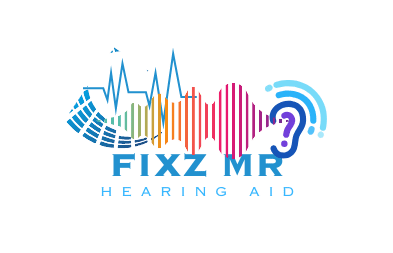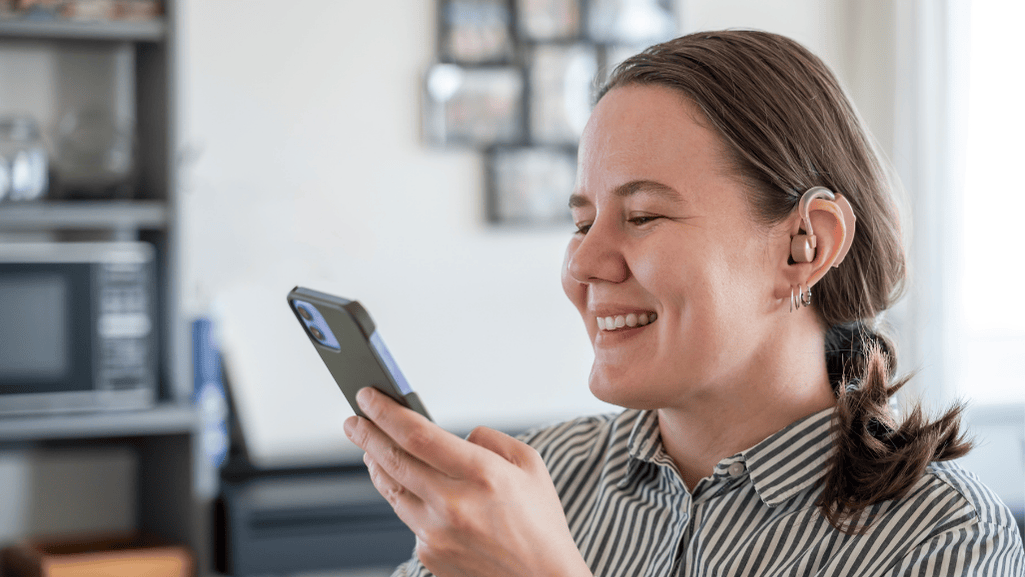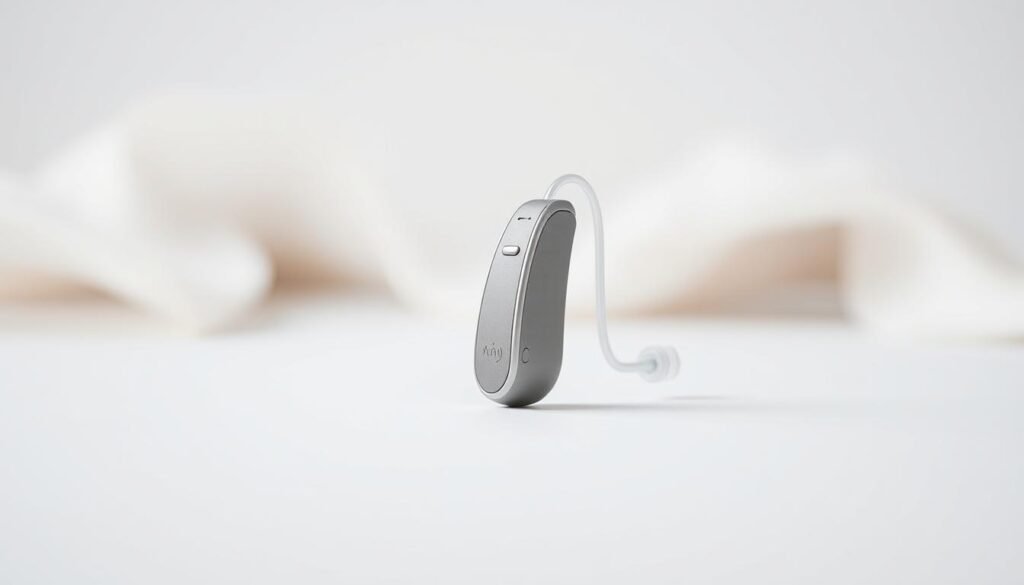Bluetooth hearing aids are changing the game. They turn wireless hearing aids into more than just tools. They are now smart communication devices. You can hear sounds better, take calls, and use smart devices. This makes these aids not just for hearing but for better connecting with the world.
These hearing aids with Bluetooth have many good points. You get better sound and can use them hands-free. They work well with other electronic devices. After the FDA said yes in October 2022, you can find Bluetooth hearing aids for less than $1,000 a pair. This makes technology for hearing loss more available to everyone.
Key Takeaways
- Bluetooth hearing aids range between $699–$7,500 per pair.
- OTC hearing aids with Bluetooth start at under $1,000, thanks to new FDA regulations.
- Advanced chips like Sonova’s SWORD and PRISM enhance universal streaming and power efficiency.
- ReSound’s MFi hearing aids offer 40–50 hours of use before recharging.
- Android devices gained hearing aid compatibility with Google’s ASHA protocol in 2019.
Introduction to Bluetooth Hearing Aids
Bluetooth hearing aids bring hearing assistance into the future. They connect easily with devices. This changes how we see and use hearing aids, fitting modern life.
Understanding Hearing Aids Bluetooth Technology
Bluetooth tech in hearing aids makes them connect with phones, tablets, and TVs wirelessly. This means smooth streaming, hands-free phone calls, and clear customized sound. Prices for hearing aids with Bluetooth start from under $1,000 per pair, going up to $7,500. These include both prescribed and over-the-counter options today.
Why Choose Bluetooth Enabled Hearing Aids
Bluetooth hearing aids have big benefits over old ones. Technologies like Sonova’s SWORD offer top-notch streaming. Phonak Paradise with PRISM chip is energy-efficient, making it last longer. They work with many devices for clear streaming.
Having music, calls, and TV straight to your ears does more than improve sound. It boosts social life and general happiness for those with hearing loss. Bluetooth hearing aids are a game changer in advanced hearing tech.
Learn more about Bluetooth hearing aids
Key Features of Bluetooth Hearing Aids
Bluetooth hearing aids use the latest tech to make hearing better. They offer easy pairing and great audio. This makes them more than just tools for hearing.
Ease of Pairing with Devices
Pairing with smart devices is easy with Bluetooth hearing aids. For example, devices like Starkey Evolv AI are slim and connect easily. They work with recent iPhones or Android phones. This makes streaming audio and taking calls smooth, thanks to companies like Sonova.
Sound Quality for Calls and Music
For calls and music, Bluetooth hearing aids provide top-notch sound. Brands like Phonak Paradise use advanced tech for clear audio. Google’s support for Bluetooth in 2019 means better quality streaming for Android users.
Battery Life and Efficiency
Bluetooth hearing aids last a long time thanks to smart energy use. They use Bluetooth Low Energy to save power. This means spending less time charging and more time enjoying the features.
App Functionality for Enhanced Control
Bluetooth hearing aids come with apps for better control. Audiologist Trisha Muth says these apps let users fine-tune their devices. For example, iPhones can adjust settings and offer Live Listen, making things easier and better for users.
Here is a table showing different models of Bluetooth hearing aids and their features:
| Model | Features | Price Range |
|---|---|---|
| Starkey Evolv AI | Discreet design, external antenna, Bluetooth connectivity | $1,000 – $3,600 |
| Phonak Paradise | PRISM chip, AI adaptation, universal streaming | $699 – $7,500 |
| Oticon Real™ | Fast processing, multiple connectivity options | $1,000 – $3,600 |
| Sonova Hearing Aids | Hands-free calling, energy-efficient technologies | $1,000 – $3,600 |
Benefits of Bluetooth Hearing Aids
Bluetooth hearing aids change how people with hearing issues connect with the world. They go beyond just helping people hear better. They create new chances for better communication, socializing, and enjoying entertainment.
Improved Social Connectivity
Bluetooth hearing aids are great for connecting better with others. With Bluetooth® hearing aids available in over 600 places, more than 500,000 people enjoy clear chats with loved ones. They make it easy to talk in groups and do social things without problems.
Hands-free Communication
Thanks to Bluetooth, these devices let you answer calls without your phone in hand. This is a big help for those who are busy or can’t hold their phones. Products like Oticon More™ and Oticon Opn S™ make calls clear, blocking out noise around you.
Enhanced Media Streaming
Bluetooth hearing aids are top for anyone who loves good sound. They can connect to devices like smartphones, tablets, and TVs. This means you get the best sound quality when you watch a show, listen to music, or follow a podcast.
Devices from companies such as Oticon Xceed and Oticon Siya excel at these features, giving you easy connections and a better hearing experience.
| Feature | Benefit |
|---|---|
| Improved Social Connectivity | Clearer phone conversations, better sound quality, and enhanced engagement in social activities. |
| Hands-free Communication | Effortless phone calls and communication, especially beneficial for active users and those with mobility issues. |
| Enhanced Media Streaming | High-quality audio streaming from various devices, enhancing the entertainment experience. |
Trying Bluetooth hearing aids is safe with a 30-day trial and free batteries. They are a big help for a complete hearing solution, improving how you connect, stream, and enjoy every day.
Popular Brands and Models
Many top brands sell high-quality Bluetooth hearing aids. They each have unique features to meet diverse needs. Jabra Enhance, Lexie, Phonak, and Starkey Genesis AI are leading the market. They are known for their advanced tech and user-friendly options.
Jabra Enhance
The Jabra Enhance hearing aids are easy to get without a prescription. They are priced at $799 per pair. These are great for those on a budget. But, they don’t work with all Android phones. Jabra Enhance leads in affordable Bluetooth hearing aids.
Lexie Bluetooth Hearing Aids
Lexie Bluetooth hearing aids offer great value at a lower price. They sound great and connect well. Lexie is a top choice for those who want quality at a good price.
Phonak
Phonak is known for the best sound quality. Its Paradise model uses the PRISM chip. This chip allows for great sound and less battery use. Phonak is the go-to for top-notch sound and strong connection features.
Starkey Genesis AI
The Starkey Genesis AI uses artificial intelligence. It helps with things like detecting falls and tracking activity. It’s perfect for those who want to improve their hearing and health.
Below is a table with features from top brands:
| Brand | Price Range | Key Features | Compatibility |
|---|---|---|---|
| Jabra Enhance | $799 per pair | OTC availability, affordable | Not compatible with Android |
| Lexie | Less than $1,000 per pair | Exceptional value, reliable performance | Versatile compatibility |
| Phonak | $699 to $7,500 per pair | Superior sound quality, PRISM chip | Universal streaming, low power consumption |
| Starkey Genesis AI | Varies | AI integration, health monitoring | High compatibility |
Comparing Costs and Value
The cost of Bluetooth hearing aids varies. This is based on their basic to advanced features. Knowing these differences helps in making a good choice.
Price Range of Bluetooth Hearing Devices
Bluetooth hearing aids can cost between $299 to over $8,000 per pair. Since October 2022, over-the-counter (OTC) hearing aids have become available. These meet FDA approval and are more budget-friendly, priced under $2,000. Yet, those with the latest tech can cost even more.
Evaluating Cost vs. Benefits
It’s crucial to look at what features matter most. This includes their sound quality, ease of use, and how well they connect. Devices above $300 perform better than the lower-priced ones. Models from $799 to $2,475 offer good value without sacrificing quality. The Jabra Enhance stands out for balancing performance with price well.
Insurance and Payment Plans
Insurance and payment plans can help with the cost. Some states require coverage for hearing aids. This is under private insurance, Medicaid, or through the Affordable Care Act. Additionally, some health plans and Medicare Part C may pay for Bluetooth hearing aids. Looking into your insurance options for these devices is a key strategy for affordability.
| Category | Price Range | Example Models |
|---|---|---|
| OTC Hearing Aids | $299 – $2,000 | Jabra Enhance, Lexie |
| Prescription Hearing Aids | $1,600 – $8,000 | Phonak, Starkey Genesis AI |
| Bluetooth Hearing Aids | $799 – $2,475 | Various Models |
Bluetooth Hearing Aids for Seniors
Bluetooth hearing aids for seniors are changing the game. They bring together the latest tech with designs that are easy to use. They focus on making set up simple and support features to help seniors hear better without trouble. This tech makes it easy for seniors to link up their hearing aids with many other devices, giving them more choice and a better life quality.
Ease of Use and Setup
Senior’s main worry about hearing aids is often how easy they are to use and get going. Thankfully, Bluetooth hearing aids are made to be super user-friendly. Devices like the Phonak Lumity and Starkey Genesis AI work smoothly with smartphones and other Bluetooth gadgets. Setting them up involves clear, simple steps. This means seniors can start using them with very little help.
Recommended Models for Seniors
When looking for great models for seniors, some Bluetooth hearing aids really shine. Here are some top picks:
| Model | Price Range (per pair) | Key Features |
|---|---|---|
| Phonak Audéo Lumity | $3,198 – $5,445 | PRISM chip technology, universal streaming, low power consumption |
| Starkey Genesis AI | $3,198 – $4,498 | AI integration, fall detection, activity tracking |
| Jabra Enhance Select | $1,195 – $1,995 | 100-day return policy, unlimited remote care |
| Sony CRE-E10 | $1,299 | Quality sound, user-friendly design |
Support and Accessibility Features
Bluetooth hearing aids help seniors in many ways, providing solid support and easy access. They come with apps that let audiologists help from afar. This includes real-time tweaks and advice. Add in features like detecting falls, alerts, and personalized sound, and seniors get a lot of help and the best hearing aid experience every day.
The Bluetooth hearing aids for seniors come in a wide range of prices, from $699 to $7,500 a pair. This variety fits different budgets and needs. Plus, lower-priced, over-the-counter (OTC) options make it easier for seniors to get top-notch hearing solutions. This lets them quickly find the right devices for them.
Technical Challenges and Drawbacks
Bluetooth hearing aids are great for better hearing and connecting with others. Yet, they bring some tech issues. Users must deal with these to fully enjoy their devices.
Bluetooth Connection Issues
One big challenge is the Bluetooth connection. Users might see their devices drop or have sound play in only one ear. This often happens with older phones and hearing aid models. So, it’s important to keep everything up to date.
Battery Drain and Management
The cool features in Bluetooth hearing aids use up a lot of battery. Things like streaming all the time or using the ‘find my hearing aid’ app make it worse. To make the battery last, adjust settings, turn Bluetooth off when you’re not using it, and use power-saving modes. Luckily, new batteries are getting better. Some can last for 40–50 hours.
Compatibility with Various Devices
There are also issues with devices not working well together. Some models might not connect to certain phones or tablets. For example, the OTC Jabra Enhance Plus doesn’t work with some Android phones. But, Sonova’s SWORD tech connects to any cellphone. It’s key to pick a model that works with your main devices to avoid this issue.
| Feature | Example | Issues |
|---|---|---|
| Bluetooth Connection | Older Phones and Hearing Aids | Intermittent Drops, One-Ear Streaming |
| Battery Management | Continuous Streaming, ‘Find My Hearing Aid’ | Increased Battery Consumption |
| Device Compatibility | OTC Jabra Enhance Plus | Incompatibility with Android Phones |
It’s important to know and deal with the tech issues in Bluetooth hearing aids. Updating devices and making smart choices can help a lot. This way, you can get the best hearing experience.
Hearing Aids Bluetooth Integration
Bluetooth Hearing Aids are changing the game for how we handle hearing loss. They’re more than just better sound. These devices let you link your hearing aids with gadgets like your phone or TV. This makes them not just about listening but also about fitting into our tech-driven lives. The Bluetooth hearing aid integration changes how we use these aids, making them part of every day.
The latest hearing solutions like the Phonak Lumity and Starkey Evolv AI have cool features. They let you make calls without holding your phone, listen to music straight into your ears, and work with smart assistants. These extras turn hearing aids into must-haves for people who want more from them than just sound help.
Bluetooth-ready hearing aids can come at different prices. For example, the Jabra Enhance Select costs $1,195 per pair, while models like the Phonak Audéo Lumity can reach $7,500. But, new rules from October 2022 aim to make Bluetooth hearing aids you can buy without a trip to the doctor more affordable. These will start at under $1,000 a pair.
| Brand/Model | Key Features | Price Range |
|---|---|---|
| Phonak Audéo Lumity | Stable Bluetooth connection, rechargeable batteries, motion sensors | $3,198 – $5,445 |
| Jabra Enhance Select | Rechargeable batteries, Bluetooth streaming, 100-day return policy | $1,195 – $1,995 |
| ReSound NEXIA | Auracast, longer battery life, Apple device compatibility | $3,198 – $4,498 |
| Starkey Genesis AI | AI integration, fall detection, activity tracking | $3,198 – $4,498 |
| Sony CRE-E10 | Affordable, essential Bluetooth connectivity | $1,299 |
Being able to link your hearing aids with different devices is key. If you have an iPhone from the iPhone 5 or an Android 8 device, you’re good to go with most hi-tech hearing aids. MFi hearing aids, like some from ReSound, are made to give the best connection with Apple gear. This makes for a smoother experience.
Conclusion
Bluetooth hearing aids have changed the game for people with hearing loss. A study looked at the experiences of 55 people from 20 clinics in Delhi and the National Capital Region. It showed big boosts in phone call listening, both in quiet and noisy places, with Bluetooth.
People also enjoyed listening to music more and felt more confident in public with their Bluetooth-enabled hearing aids. These findings point to the real advantages of using Bluetooth with hearing aids.
Bluetooth tech in these aids clears many issues with personal listening devices. It helps users wear their aids more and have better talks over video. Phonak has really improved the life of 86% of their users.
If we look at Phonak’s Audeo Fit Lumity and Audeo Life, they come with health tracking and waterproofing, making them more versatile. Adding to this, brands like Nearity and Lexie offer varied options that suit different needs and budgets.
The best Bluetooth hearing aids mix ease, top sound, and the latest connections. They’re not just for helping us hear better. They’re becoming essential tech that fits with our modern, digital lives. The clarity and connections you get from Bluetooth hearing aids mean a lot. They show us how important these aids are for our hearing health.











